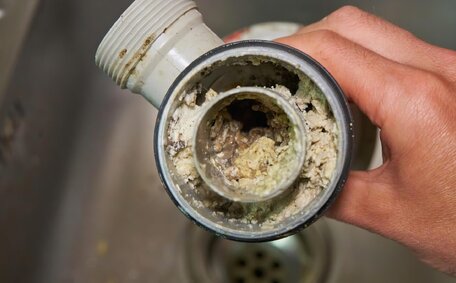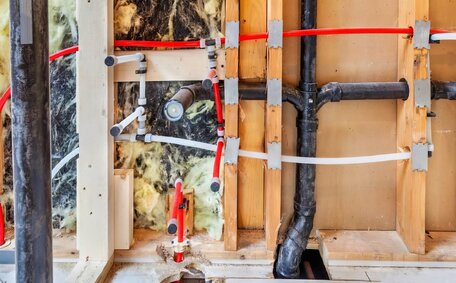Understanding Natural Gas and Propane
Propane and natural gas are widely used as fuels for heating, cooking, and other applications in homes and businesses across Australia. At a basic level, natural gas is primarily methane while propane is a liquified petroleum gas made up of propane and butane.
Recognising the differences between these fuels is crucial for consumers to make informed energy choices.
Some of the main differences involve their energy efficiency, cost, availability, environmental impact, delivery and storage methods, and safety considerations. Parameters like BTU output, pipeline access or the need for tanks on-site, and leak risks also set natural gas and propane apart from one another.
By examining how these aspects stack up, we can better comprehend the advantages and limitations of each fuel to make the smartest choice for our home or business. This article will serve as a comprehensive yet clear guide on the differences between propane and natural gas, touching on all the essential areas of comparison.
Composition and Sources
When examining the composition of gas vs natural configurations, a marked distinction arises with natural gas methane being the primary component, accounting for 90-95% of its composition.
Propane, on the other hand, is a liquefied petroleum gas, consisting mainly of propane and some butane.
Upon refining, methane emerges as the dominant component of natural gas after removing heavier hydrocarbons like propane and butane.
It can be harvested from natural gas fields and reservoirs via drilling. Crude oil refinement also produces liquefied petroleum gases such as propane and butane.
Given Peakhurst Plumbing’s location in Sydney, the natural gas processing would predominantly result in a supply from coal seam gas extracted in surrounding areas combined with imports of liquified natural gas (LNG). Meanwhile, most propane used would likely come from local refineries processing crude oil and liquefied natural gas.
Energy Efficiency and Heating Value
When comparing the energy efficiency of natural gas versus propane, an important metric is the British thermal unit or BTU. BTUs measure the amount of heat energy released by burning a specific quantity of a fuel.
One cubic foot of natural gas releases around 1,030 BTUs, while an equivalent amount of propane delivers approximately 2,516 BTUs.
This indicates that propane, offering double the BTUs for the equivalent quantity of fuel, has a greater heating capacity than natural gas. In terms of powering home appliances, water heaters, stoves, and furnaces, natural gas generally offers a more cost-effective energy solution.
Yet, on a per-BTU basis, residential natural gas is significantly cheaper than propane.
Propane and natural gas can both deliver comparable levels of efficiency in appliances designed for their use. However, when factoring in cost, the pricing of natural gas alongside comprehensive pipeline infrastructure often results in a more efficient home heating fuel source for many suburban dwellers.
Comparing Costs for Residential and Commercial Use
When analysing the costs of using natural gas versus propane, a key point is that natural gas holds a clear price advantage in terms of cost per BTU of energy. Residential natural gas typically costs around one-third of propane per BTU.
This means if your furnace or water heater consumes 10,000 BTUs of energy, it would cost roughly three times more to power with propane as opposed to natural gas. Over an appliance’s lifespan, the cumulative cost savings from natural gas can become quite substantial, particularly for high-consumption items such as home heating systems.
For many suburban homes with access to natural gas pipelines, gas ends up being the cheaper option for heating and cooking needs. For instance, households not connected to gas pipeline infrastructure face pricey construction costs to bring gas mains onto their properties. The expense of adding new gas lines and metres could negate any potential savings compared to using propane tanks.
However, Propane may be the more economical choice in specific scenarios.
Likewise, propane may better suit rural households located far from existing pipelines. Since suppliers directly refill propane tanks on-site, homes don’t need the same infrastructure access. The easier transportation and delivery of propane containers can make it more cost-effective for remote properties.
For commercial enterprises, the scale of use also factors into costs. Larger businesses like hotels, restaurants and office buildings consume bigger volumes of fuel for heating, cooking and other gas-powered appliances. For these high-demand applications, the greater energy efficiency per BTU makes natural gas the cheaper option in areas serviced by municipal pipelines.
Installation and Infrastructure Requirements
When it comes to installing natural gas versus propane systems, there are some key infrastructure differences that impact their accessibility and costs.
Natural gas requires connection to municipal gas utility pipelines in order to receive supply into a home or building. There may also be additional costs to bring gas mains into neighbourhoods that lack existing infrastructure.
Installing new gas lines can incur high upfront expenses, including the labour and materials to trench pipelines, install metres and other equipment.
In contrast, propane is delivered and stored on-site in pressurised tanks, so it simply requires an area for tank installation and doesn’t need offsite pipeline access.
However, propane does need large tanks that meet safety codes and may necessitate space considerations. Typical tank sizes for homes range from 120 to 1,000 US gallons. Changing or adding tanks also means further costs down the line.
When it comes to existing structures and locations, areas connected to natural gas pipelines tend to favour gas systems as there is already accessible infrastructure in place. However, for rural areas or communities without nearby pipeline access, propane can often be easier and more affordable to implement given its portability.
Ultimately both fuels have infrastructure requirements—whether pipelines for gas or tanks for propane. Assessing the conditions of a site and costs of developing delivery systems will determine which makes the most economic sense.
Assessing Environmental Impacts
Propane is considered a cleaner-burning fuel than natural gas, an important distinction in environmental impact. Propane combustion produces less air pollution and greenhouse gases than natural gas. Specifically, using propane generates about 20% less carbon dioxide per BTU than burning natural gas.
However, it is also crucial to note that although natural gas is a nonrenewable resource, it is still regarded as a relatively eco-friendly fuel option, especially compared to higher-polluting energy sources such as coal and oil. In fact, natural gas emits nearly 50% less carbon dioxide than coal per BTU.
One environmental concern with natural gas is methane leaks. As a potent greenhouse gas, methane contributes significantly more to climate change per molecule than carbon dioxide. Strict regulations now require gas utilities to limit leaks, yet leaks can still result in small-scale methane emissions across supply infrastructure.
Both natural gas and propane can play important roles in low-emissions energy systems. Ultimately propane combustion creates fewer overall greenhouse gases, while leaked methane means natural gas still retains moderate environmental impacts despite cleaner-burning properties.
Transportation and Storage
When it comes to transporting and storing natural gas versus propane, there are clear differences due to their states of matter. Natural gas is transported from wells and processing facilities to end users predominantly via pipelines. Compressor stations help push the gaseous product through pipeline networks running across states and regions.
Propane, meanwhile, is pressurised into a liquid state for efficient transportation to bulk storage terminals.
A significant benefit of propane is its portability, with pressurised tanks that can be stored almost anywhere, unlike natural gas pipelines, which necessitate substantial infrastructure investments. This makes propane a practical option for off-grid sites. And propane tanks can be swapped out or replenished without disruption unlike pipelines.
However, natural gas pipelines provide uninterrupted flow without needing manual deliveries. Gas distribution systems also have lower ongoing transportation costs compared to the repeated hauling of heavy propane tanks over long distances.
In summary, the delivery process and storage requirements align with the innate properties of these fuels - pipelines and pressure regulation suit lighter natural gas’s gaseous form, while heavy-duty tanks match the weightier liquid state that propane naturally takes.
Propane Tanks vs. Natural Gas Pipelines
When comparing propane tanks to natural gas pipelines for residential and commercial use, there are some important differences in their infrastructure and installation.
Tanks also may need eventual replacement after prolonged use. And there are space considerations for housing potentially large tanks on small properties.
However, homeowners must arrange routine supplier visits to fill up tanks as propane runs out.
Meanwhile, connecting to natural gas pipelines demands major upfront installation fees to trench pipework and add customer supply lines.
Additionally, the installation of gas pipelines can disrupt properties.
For rural areas where gas infrastructure is scarce, propane tanks present the more feasible option, albeit requiring diligent monitoring and top-ups. But in residential areas with existing natural gas networks, connecting to pipelines often makes more long-term sense, avoiding hassles from manually managing propane supplies even if initial expenses are steeper.
For larger commercial sites, ample space to situate big propane tanks may lend itself better over paying the substantial costs to trench long pipelines from gas mains. But for commercial operations within municipal infrastructure boundaries, hooking up to natural gas networks keeps utility needs met indefinitely minus handling logistics like refill bookings and metering schedules.
Safety Considerations
When using any gas fuel, safety should always be the top priority. Both natural gas and propane carry risks if improperly handled, so adhering to usage and storage guidelines is critical.
In terms of flammability, natural gas and propane burn at similar temperatures when ignited. This means that propane, being heavier than air, can pose a greater combustion risk indoors if it accumulates near ignition sources.
Propane, being denser, tends to pool at floor level if leaked, whereas lighter natural gas rises and dissipates more rapidly.
Annual servicing of equipment such as pipelines, couplings, and tanks is essential for detecting wear and tear.
Watch out for signs of leaks like rotten egg smells.
It’s imperative to use certified technicians to ensure all gas systems comply with Australian standards.
It’s advisable to place safety detectors near appliances and in low-lying areas where propane, in particular, is prone to accumulate.
While requiring caution, adhering to usage guidance means both natural gas and propane can safely serve Australian homes and businesses.
Choosing the Right Fuel Source for Your Needs
When deciding between natural gas versus propane for your home or business, there are a few key considerations to help select the best fuel option.
When gas pipelines are accessible, natural gas frequently emerges as the most financially viable option for heating and cooking. Homes already connected to municipal networks can swiftly tap into this existing system, which is significantly less expensive than alternative fuel sources. The pricing per BTU makes gas very economical across appliances used daily like furnaces, water heaters and stove tops.
For properties without nearby gas mains, propane may be a more suitable option. Propane tanks are a sensible alternative in remote areas, circumventing the costly installation of gas pipelines, despite propane’s marginally higher fuel cost. The portability of tanks also aids rural residents beyond municipal grids.
Environmentally, propane burns cleaner than natural gas, producing less carbon dioxide. But modern gas networks aim to lower methane leaks, helping curb gas’s climate impact.
Peakhurst Plumbing offers personalised advice to align the ideal fuel supply with your specific needs for home or business. Contact us at jobs@peakhurstplumbingservices.com.au or call 1300 349 338.






